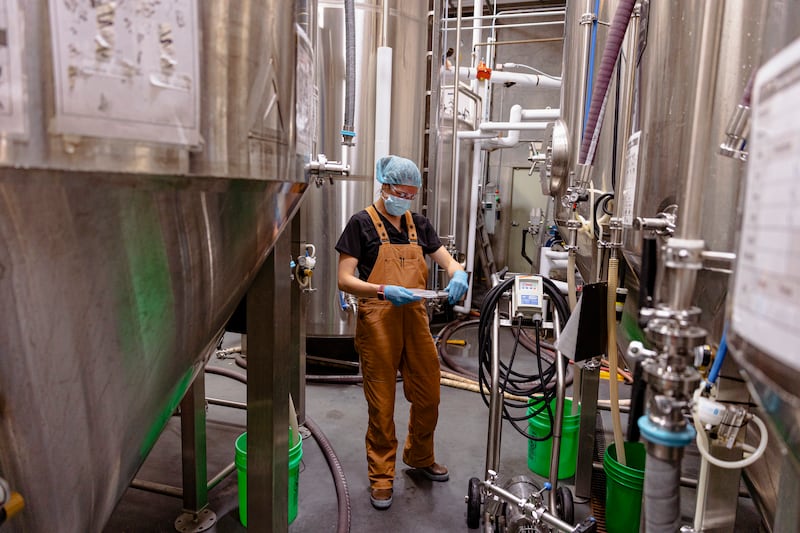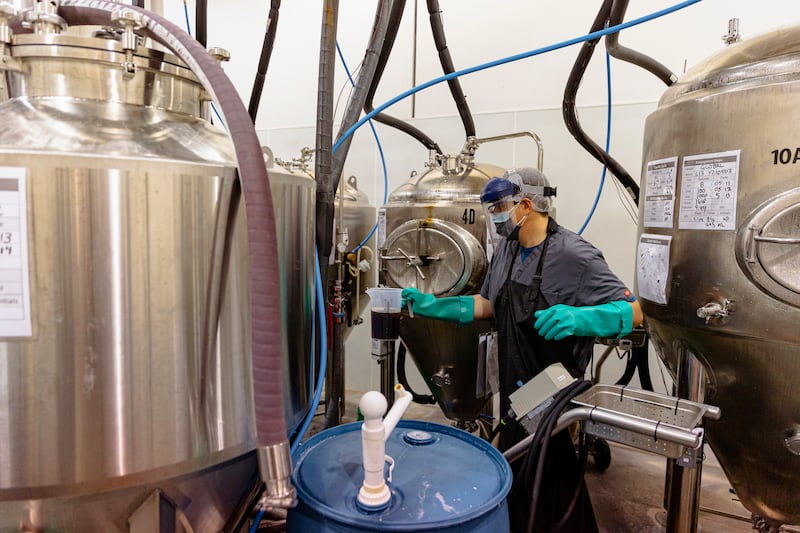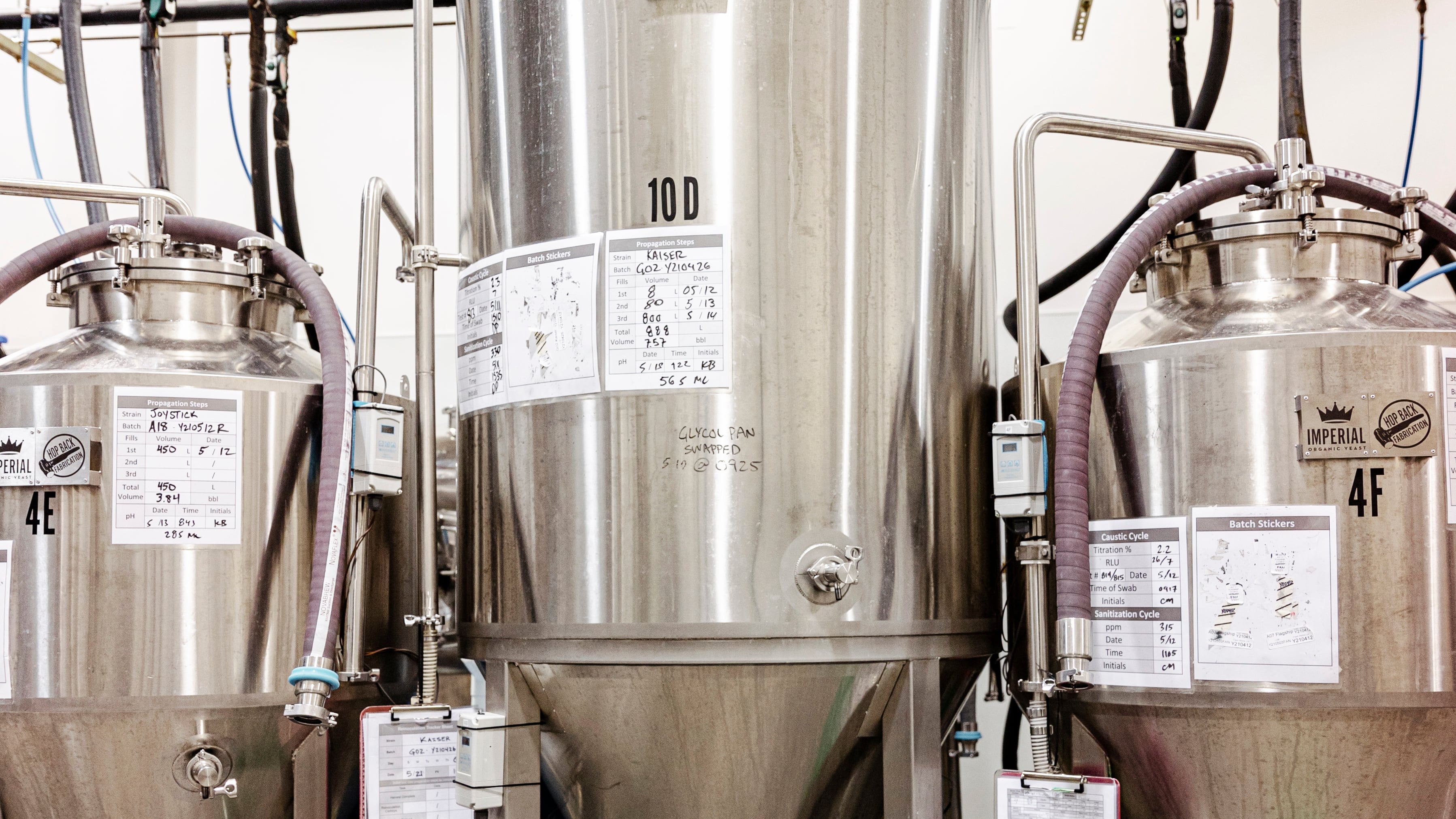From aluminum to refrigerators, businesses in the brewing industry struggled to get essential equipment after the pandemic disrupted global supply chains in 2020. For Owen Lingley, owner of Imperial Yeast, his critical shipment in the bottleneck was a little more unusual than most: a cargo container filled with guava skins stuck at a port in India.
“So yeast need zinc, and finding a soluble source of organic zinc is really difficult. We use guava skins for that. It comes out of India,” he says. “The last time India had a really big [COVID-19] spike, they just shut the country down and nothing went in or out, and so it just sat at a dock for, like, 95 days.”
The tropical fruit peel holdup forced Lingley to suspend production of Imperial’s organic yeast nutrient—a wort supplement for brewers that requires the same zinc extract—multiple times last year until the ship finally arrived from overseas. After that incident, Lingley started using air freight and ordering in larger quantities to be safe.
Inventory and raw material management was just one of many issues Imperial navigated during the outbreak. The company, which has a lab and a test brewery 1 mile apart from each other in Northeast Portland, had to quickly stagger shifts across all seven days of the week to ensure everyone could space out with a 6-foot buffer. It even shut down completely for about a month when breweries’ demand for yeast plummeted during lockdown.

But internal adjustments seem much more manageable compared with the daunting task of meeting the needs of thousands of customers across the county, particularly when you consider what Imperial deals in: “We’re the only part of the brewing industry that provides a living organism,” says Lingley.
“One of the first things that we did was look at the health of the yeast and how long they would be shelf stable,” adds Imperial research and development scientist Matt Winans. “Viability is going to be whether cells are alive or dead, and vitality is how healthy the cells are. We found we produce some really good yeast and it stays healthy for a long time.”
In general, the single-cell fungus lasts around four months as long as it’s refrigerated properly. But another difficulty arose once states reopened and brewing resumed, only to be followed by another closure a few weeks or months later. Brewers who would typically save their yeast from a single pitch to ferment around 20 vessels might have gotten around to only two before the next mandated freeze. In cases like that, Lingley and his employees were there to advise.
Helping brewers draft production timetables became another key job, but so was simply staying in communication to ease nerves. Lingley says that pFriem in Hood River was one of the first businesses to call after stay-home orders were issued to make sure Imperial could keep the yeast coming.
“Everybody’s world got really small, and I wanted to make sure that we were there to support when they needed it,” Lingley says, “and get what they wanted to them quickly so that they didn’t have to stress about that part.”
“They have always been amazing, and their level of customer service did not falter even a little bit during the pandemic. And it’s part of the reason why 95% of our yeast needs go to Imperial,” says Max Kravitz, pFriem’s quality control manager, who credits the company’s assistance in enabling the brewery to continue to pump out its flagship lager. “The pFriem Pilsner is what sort of defines our brewery. It was really interesting to see pFriem, which dominated in draft and 500-milliliter bottles, to mostly converge into aluminum. It was a lot harder ensuring we had the aluminum supply that we needed than it was finding yeast.”
Another trend Imperial observed was brewers asking for fewer strains. Some pared down orders to focus on canning where on-premises draft sales were limited or barred. In those instances, Lingley says customers would typically request an IPA strain and a lager strain instead of the three or four they once did. Then there were others who hoped to pinpoint just one that could do a lot of heavy lifting.
“A lot of people looked at ways to save money,” he says, “so they wanted to find a different strain that could run their whole gamut of beers.”
Those frugal practices appear to be coming to an end, however, as more shots go into arms and brewpubs and taprooms are itching to operate at full capacity. The first sign of optimism came early this year when requests for Belgian and German strains—varieties that had been mostly absent from purchase orders for a year—began pouring in.
“We’ve seen taproom strains continue to grow, where people want to have a couple saisons or a wheat or something a little more interesting,” Lingley says. “I think brewers are super excited to get creative again. And we’re excited to see that.”
Get It Here: pFriem Family Brewers, 707 Portway Ave., #101, Hood River, 541-321-0490, pfriembeer.com. Noon-7 pm daily.


